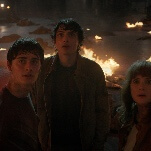A brief history of spinning: 6 game show wheels
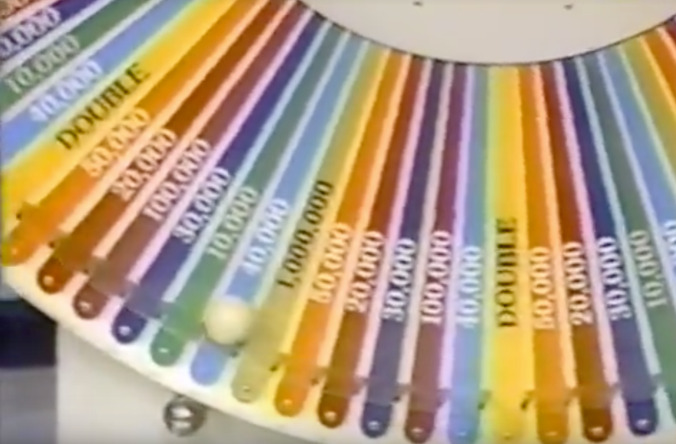
1. The Wheel, Spin The Wheel (2019)
Fox’s new big-money summer quiz Spin The Wheel suggests, in its title, an embrace of game show basics. As TV spectacles go, what is more straightforward than Jane Citizen spinning a wheel of cash? “Everyone knows how to spin the wheel,” Spin The Wheel executive producer Justin Timberlake observes at the start of each episode. “But,” Timberlake continues.
The remainder of the show delivers on that “but.” Spin’s appearance of simplicity is mere bait to lure doe-eyed viewers into Justin Timberlake’s labyrinth of game show premises. In addition to its wheel, Spin incorporates a thin pop culture quiz. Syrupy human-interest backstories. Deal Or No Deal-style decision points. And so on.
For the contestant’s family-member sidekick—yes, there is one of those too—Spin The Wheel conjures an open-top privacy booth, whose glossy panels envelop the occupant in the manner of a 24th-century commode (if the denizens of the future are so lucky).
The show furiously recombines its slurry of ideas, huffing and puffing to the end of its hour, where a climax of cruel psychodrama awaits. In one episode, a contestant loses out on $1.1 million—hard-won, by spinning—because her daughter secretly accepted an early bail-out offer “from The Wheel.” (The show treats The Wheel as a character, so let’s capitalize it as such.) For that episode’s final act, the sobbing, overwhelmed young woman reveals her costly error to her mother at center stage. This manipulation, this wielding of a sinister production apparatus to melt the brains of hapless regular folk—it ought to offend me as a critic. And of course it does, harrumph, et cetera.
But.
Good lord, would you get a load of that magnificent wheel!
The Wheel is a 40-foot jewel of TV production design, a spectacle of sheer size enhanced by attention to small details. Stripes of light radiate along the spokes of The Wheel as it spins.
As its heft slows to a halt, a metallic ball skitters along the outer rim, dancing with hilarious caprice until it settles into one wedge or another. Rags or riches. Victory or defeat. The Wheel is indifferent.
In a wide shot—which Spin The Wheel employs liberally—the scale of the colossus dwarfs the people on stage. The audio track accentuates that bigness with layers of foley art. The producers of Spin The Wheel hired a structural engineering firm to build The Wheel, and they want you to hear all that engineering. When The Wheel lurches into motion, we hear a dull whoosh and a long, rising hum, as if mighty dynamos are whirring to life. Hydraulic hisses and creaking metal suggest a complex mechanical works. The disco ball bounces with heavy pings and thuds.
The colors of The Wheel tell the story of a Spin The Wheel playthrough. In the early stages of the game, when the wheel is a largely benevolent force, it glows with a benign rainbow, the kind of soothing and complementary hues that you might encounter shopping for bath towels at Target.
By the final round of spins, The Wheel threatens our hero with instant doom, and accordingly it breaks out in fever, dotted with red-hot patches of menace.
Answer a question correctly, and The Wheel blooms in gold, beckoning players to the Elysium of wealth that awaits them (unless their gutless daughter sells them out first).
Get a question wrong, and The Wheel glowers in crimson. “You have failed to correctly identify the Guinness record holder for longest-serving TV judge,” The Wheel seems to say, “and this angers me.”
Spin’s wheel does have one especially inhuman wrinkle. In another blow to the credibility of the show’s title, nobody on Spin The Wheel truly spins the wheel. As mentioned in each episode by the host, Dax Shepard (who does a good job within the confines of a cumbersome, over-edited production), the speed and duration of each spin are determined by a random number generator.
Shepard also tells players that The Wheel is “activated by your touch,” which is true only in a notional sense. Although the show’s editors work hard to cut around the carefully rehearsed dance of an actual “spin,” it’s still evident that players simply stand with their hand draped on The Wheel, waiting for it to move so they can pretend to give it a push. The human touch has become a ceremonial affectation.
The Wheel is heartless. Yet in this respect, Spin’s centerpiece is the same as every other game show wheel. They all give tangible form to ineffable fate. While a wheel spins, it is pure potential, a 360-degree universe of possibilities. As it stops, and our focus pushes in to ever-smaller arcs of the circle, the possibilities collapse to a single reality.
The high stakes of Spin place the ruthless nature of this process in the foreground, to be sure, but the basic narrative told by a spin remains the same as ever. The game show wheel has always been a device to transform what could happen into what does happen, with no regard for mortal desires. Over the years, producers have developed a variety of ways to use and misuse that simple power—the power to determine fate and look pretty while doing so.
2. The bonus question wheel, You Bet Your Life (1950-61)
It’s natural to assume that wheels have always been a staple of game show design, but in fact, until the mid-’70s, they were a rare sight on American television. When a wheel did appear, it tended to make only a cameo.
Contestants on Groucho Marx’s You Bet Your Life, for instance, might spin a wheel to boost the value of a bonus question, but this was a matter of such minor consequence that Groucho tended to let his gaze drift, puffing on his cigar as the glorified pizza dish twirled on its spindle. (Groucho regarded all of the game elements with gentle indifference, since the quiz was a perfunctory premise for his banter with You Bet’s often-eccentric contestants.)
Dinky though it was, the You Bet wheel was distinctive enough at the time to warrant prime placement in at least one version of the show’s splendidly animated opening titles—an indication of how unusual it was for the time.
3. The wheel, Wheel Of Fortune (1973-present)
Such would be the wheel’s role—occasional bit player—until Wheel Of Fortune elevated it to the status of trope. This breakthrough came only after a series of false starts. The first germ of Wheel was seeded when TV host and producer Merv Griffin became enamored with the large, free-standing game wheel he would often see posted at the front entrance of Las Vegas casinos, known in the trade as a “Big Six” wheel, but also commonly called a “wheel of fortune.”
Big Six is not a good game. It’s roulette for people who are too dumb to handle roulette. No matter. Griffin was only concerned with the Big Six’s aesthetic allure. He already had a game concept in the works—televised Hangman—and he knew that was too dull a pitch on its own. In the smooth, entrancing motion of the Big Six, he saw a visual gimmick to liven up his word game. According to his memoir Merv, he went so far as to dispatch the president of Merv Griffin Enterprises to meet with a Caesars Palace executive and learn the secrets of the Big Six design. That intrepid research would prove to be less relevant than Griffin imagined.
By the time Griffin was ready to shoot a run-through, his Hangman concept had acquired not just a wheel but another, incongruous element: retail. The 1973 pilot was titled Shopper’s Bazaar to tantalize viewers with the fantasy of a bazaar made just for shoppers—in other words, a bazaar.
And it certainly was bizarre. In the pilot, the game plays out in a schizophrenically decorated living room, as if the interior design were handled by aliens who had only heard of human dwellings via interstellar radio broadcasts. The rules are a muddle, too. For instance, with a lucky spin, a player can win a secret clue, transmitted by telephone, to aid in solving the puzzle. One such clue: “We’re looking for a thing.” Contestants’ winnings appear on a board called the “Accounting Department,” which is as lifeless and cryptic as that moniker would suggest.
Watching the pilot today, it feels like every detail is wrong, most of all the wheel. Standing awkwardly at center stage beside host Chuck Woolery (who would go on to emcee Wheel Of Fortune for its first six years), the Shopper’s Bazaar wheel is a Big Six-style device that the contestants never touch. Instead, they invoke the clumsy catchphrase “Stop the wheel!” Then Woolery pushes a button to slow the rickety disc to a halt. This is all terribly unsatisfying, but worse yet, the wheel is so small and drenched in so much glitter, it’s often hard to make out the numbers on the individual wedges.
Griffin fell in love with the Big Six because he was gazing upon it in person, against the cavernous backdrop of a Las Vegas casino. Seen through TV monitors, within the tight confines of a typical TV studio, the wheel became a different beast. Griffin had discovered what every wheel-crazy game show producer eventually realizes: It’s hard to photograph a giant circle in pleasing fashion.
The trouble is not so much photographing the giant circle—it’s trying to photograph anything else when there’s a giant circle in the frame. A circle filling the squarish viewport of a pre-high-definition TV set does not leave any graceful space in the picture for your host, or your contestants, or your fabulous merchandise waiting to be won. It can only be made so tall before it crowds out other elements of the set—or comes up against the lights in the rafters. (Griffin did not have the luxury of Spin The Wheel’s necessarily huge auditorium.)
There’s also the problem of staging. It’s awkward and time-consuming to have players march up individually to spin a free-standing wheel, which is why the contestants on Shopper’s Bazaar aren’t allowed the opportunity.
In testament to the power of the creative process, the shambles of Shopper’s Bazaar evolved into one of the most successful syndicated series of all time. And in this case the pivotal transformation came from art director Ed Flesh. His idea, implemented for pilot tapings of the rechristened Wheel Of Fortune: Put the wheel on the floor.
By laying the wheel flat and dangling a camera from the ceiling, Flesh solved a number of problems at once. Shot from above, the wheel now occupied its own visual plane, which meant that Flesh could make it larger without crowding other elements of the set. Just as important, all the players could be situated at the wheel and muscle it into motion with their own hands, which brought a potent physicality to the prop.
Flesh introduced other refinements. He cut back on glitter and focused the color scheme to make dollar values more legible. Instead of just a single “clapper” (the pointer that indicates the value of a spin), Flesh placed one in front of each contestant, so in contrast to the chintzy clack-clack heard on Shopper’s Bazaar, the wheel emits a more full-bodied thrum as the clappers purr in triplicate. This is a real noise, as opposed to the fakery of Spin The Wheel, but in both cases careful attention to audio gives the wheel a robust presence in the perception of the viewer.
Decades after the show’s 1975 network premiere, the Wheel Of Fortune wheel is so familiar that it’s seldom recognized as an innovation, but it was, and a brilliant one. By disregarding Griffin’s fondness for the Big Six and possessing the vision to use all three dimensions of a constrained studio space, Flesh solved the riddle of the televisual wheel and cleared the way for the obscure footnote of Shopper’s Bazaar to blossom into a decade-spanning mainstay of American TV evenings.
4. The Big Wheel, The Price Is Right (1975-present)
Wheel Of Fortune was not an immediate hit, but Flesh’s creation was so beguiling that it triggered a case of wheel envy across the game show industry. Mark Goodson, the genre’s most successful and prolific executive producer, was not immune. Despite having seldom used them in the past, Goodson would oversee the addition of wheels to two of his biggest franchises in the late ’70s. One of those wheels was an enduring success, and the other was a pointless complication of a great show. The Price Is Right’s wheel was the former.
A wheel takes a while to slow down, and that quality comes in handy when you have time to fill, as the Price Is Right staff did in the fall of 1975. The Bob Barker version of Price had adhered to a half-hour format since its debut in 1972, but with the show entering its fourth season as a proven performer for the network, CBS was entertaining the idea of expanding Price to 60 minutes. This would be a boon to Goodson, yet it created a new challenge for the Price producers.
An episode of the half-hour Price is structured simply enough: First, there’s the opening sequence, then you play three pricing games, and finally comes the Showcase round (in which the day’s two top winners compete for lavish prize packages). For the hourlong format, the producers doubled the number of pricing games—simple enough. But they couldn’t double everything. They couldn’t broadcast two title sequences, nor could they play two Showcase rounds, as the Showcase is the climactic capstone to an episode of Price.
There needed to be some brief bit of gameplay to make up the shortfall and allow Price to fill its newly expanded time slot. Thus the Showcase Showdown was born.
In the Showcase Showdown round, three contestants spin a wheel to earn the highest score possible without going over $1.00. Whoever comes out on top proceeds to the Showcase at the end of the hour. Played twice per episode, the Showcase Showdown solved Price’s timing conundrum. Yet the new wheel created headaches of its own.
The first iteration of the Showcase Showdown wheel—seen during a week of test episodes that put the 60-minute format through its paces—was a stand-up spinner somewhat like the one that caught Merv Griffin’s eye. In an echo of the Shopper’s Bazaar mess, it created thorny problems of photography and staging.
The rainbow-colored wheel was pretty enough, but it left no room for the three players, who each had to make their way up from the “Contestants’ Row” area at the edge of the Price stage. After spinning, the contestant in the lead moved along to a separate podium that displayed their score. All this movement made for a choppy, slow rhythm. The first Showcase Showdown lasted almost six minutes. Too long!
One principle of game show production design is that it should be easy for viewers to assess the state of the game at a glance. It takes only a moment to scan the scores on Jeopardy!, for instance, and Spin The Wheel has a large screen at the base of The Wheel whose primary purpose is to display the current jackpot. But the “pilot” version of the Showcase Showdown had no such visual economy. The players-in-waiting, the wheel, and the current leader were scattered across three separate shots with no clear spatial relationship between them.
Wheel Of Fortune resolved the shortcomings of its first-draft wheel by rotating the whole works 90 degrees so it laid flat. On Price, the solution was also a 90-degree turn, except along the vertical axis, so that the audience views the wheel from the side. In this configuration, the wheel was enlarged—indeed, before long it was deemed the “Big Wheel”—while still leaving plenty of room in the frame. The upshot was that the visual story of a Showcase Showdown could be told in a single coherent shot.
The slim profile of the wheel also enabled Price’s director at the time, Marc Breslow—arguably the most visually innovative game show director of all time—to create a striking graphic treatment that presented the spinning Big Wheel alongside a close-up of the contestant’s real-time reaction.
And like the You Bet Your Life wheel before it, the Big Wheel is such a distinctive part of Price’s visual language that it gets prime placement in the title animation.
5. The Star Wheel, Match Game ’78 (1978)
If the addition of a wheel solved problems for Price, it only exacerbated the issues that troubled another Goodson hit—the bawdy fill-in-the-blank contest Match Game.
Since its shag-carpeted revival in 1973, Match Game had generated strong numbers for CBS. It was the top game show of the ’70s, and Goodson had even parlayed the success of the show into another hit, Family Feud, which was adapted from Match Game’s “Audience Match” round. Feud was hosted by the most beloved member of Match Game’s celebrity panel, Richard Dawson, and therein lay the nightmare for the Match Game staff.
By 1978, Feud’s ratings had surpassed those of Match Game, and Dawson’s ego had metastasized accordingly. Since he was the acclaimed master of his domain as the emcee on Feud, Dawson resented the bit part he was still compelled to play in the Match Game ensemble, and his surliness was evident on air. As he agitated to be let out of his panelist contract, Dawson resolutely refused to smile during Match Game tapings.
The players did not seem to notice. Their love for Dawson did not waver. As they had for years, the overwhelming majority of contestants continued to select Dawson as their partner for the “Head-To-Head Match” bonus game. Dawson relished this position of quasi-privilege. Then came the Star Wheel.
In an ostensible effort to spread camera time more evenly among the show’s celebrity guest, the Match Game producers decided to no longer allow contestants to choose their own partners for the Head-To-Head Match. Instead, the selection would be made by spinning a giant, glittery wheel adorned with the names of all the panelists. Dawson, who viewed the bonus game as his showcase segment, was furious. He viewed the Star Wheel as a sparkling “screw you” from his Match Game masters. And maybe, in part, it was.
This pall of grievance must have been exhausting for the people working on the Match Game set, but at least it produced one of the most memorable moments in game show history: the Star Wheel debut.
As host Gene Rayburn explained the new toy, a seething Dawson slipped in a snide remark about Chuck Woolery, implying that Goodson’s gadget was nothing more than a Wheel Of Fortune ripoff (which was an uncharitable but accurate observation).
Then, after all the drama and hurt feelings that the Star Wheel had stirred up, a player finally got to spin the damn thing for the first time. As it slowed, the wheel was suddenly possessed by a mischievous sense of irony: It came to a stop on Richard Dawson. The panelists, well aware of the backstory, walked off the stage in mock protest. “Do you know how much that wheel cost us?” cracked guest Mary Wickes. “And it’s right back to Richard!”
5a. The Star Wheel, Match Game (1990)
The Star Wheel was not the beginning of Richard Dawson’s Match Game difficulties, nor was it the end of them. (Dawson would finally be released from his Match Game obligations after a taping in which he not only refused to smile but also refused to remove his sunglasses.) The more significant takeaway from the Star Wheel mess is that it shows how little Mark Goodson and his staff understood the success of Match Game.
Lost amid the personal drama of the Star Wheel was the reality that a wheel had no business on Match Game in the first place. The Price Is Right is a carnival atmosphere—a wheel fits right in. But Match Game is a loose, boozy shindig where Hollywood B-listers make silly jokes. A flashy game of chance does not jibe with the cocktail party vibe.
It is in keeping, however, with how Goodson perceived the show. As the ’70s wore on, the funny banter between the celebrities was sharply curtailed, and the show focused more intently on its paper-thin gameplay. Despite all evidence to the contrary, Goodson believed that Match Game’s appeal lies in its game, which is like believing that an ice cream sundae’s appeal lies in its glass bowl.
Mark Goodson’s son, Jonathan, oversaw a (short-lived) revival of Match Game in 1990. Jonathan’s choices made it clear that his father’s misapprehensions about the show were congenital. Match Game ’90 weighed the format down with dull game elements like a “Match-Up!” round in which players and celebrities tried to fill in blanks at a rapid-fire pace—apparently on the theory that the Match Game audience demanded less fun, more matching.
This revival retained the vestigial Star Wheel, as well (a mistake that the current ABC primetime Match Game does not duplicate). The 1990 model of the Star Wheel is memorable only for its nifty design. Instead of spinning the wheel, contestants would grab a pointer and propel it around a disc adorned with the celebrity panelists’ names. It’s the rare example of a game show wheel that doesn’t spin.
6. The wheel, The Big Spin (1985-2009)
You would be hard-pressed to find a show with a purer dedication to the wheel than The Big Spin, a California Lottery show that aired, in various permutations, for more than two decades after its 1985 premiere. In its original format, The Big Spin featured almost nothing but spinning. One after another, contestants (who won their way on air by playing scratch-off tickets) would join host Geoff Edwards on stage, exchange small talk, and then spin a wheel loaded with cash prizes ranging into the millions.
As a local lottery show, it’s unlikely that many viewers outside the West Coast know of The Big Spin. It’s almost certain, though, that the creators of Spin The Wheel recall it fondly, because The Big Spin provided the clear inspiration for their eponymous prop. Like Spin The Wheel, The Big Spin focuses on a Big Six-ish stand-up wheel (a workable design if you are willing to build your whole show around it) but with a key difference: Rather than a clapper outside the rim of the wheel, The Big Spin employs a roulette ball inside the wheel, which bounces madly before nestling in a wedge as the wheel slows.
The use of a ball changes the visual rhythm of a spin, because rather than our eyes being drawn to a fixed point, we follow the ball’s erratic bounces, unpredictable until the last moment. It’s a lively effect that works just as well on The Big Spin as on Spin The Wheel, even as the latter show magnifies the scale of the action to ludicrous proportions. Still, aesthetics are probably not the only reason that Spin The Wheel chose to ape The Big Spin’s ball.
Remember the quirk of Spin The Wheel’s “spins”—namely, that their power is set by a computer and not by the amount of oomph provided by the contestant. Host Dax Shepard assures us (as does a wordy disclaimer in Spin’s end credits) that this determination is random, but that’s an invisible, abstract process that does not come across on screen. Given the high stakes and the potential for dramatic moments, viewers could quite reasonably wonder if the show’s producers actually control exactly where The Wheel stops.
The ball tacitly removes that concern, by making it irrelevant. With a stationary clapper, stopping a wheel is the same as deciding how much a spin is worth. Not so with a ball. Even if you could control the motion of The Wheel on Spin The Wheel, it’s implausible that someone could also control the free-moving ball inside. And crucially, the ball’s unpredictability is perceptible on screen in a way that a random number generator is not. The ball is, in essence, an extra level of randomness to reassure the viewer.
As mentioned above, a wheel is a device to transform what could happen into what does happen, with no regard for mortal desires. That last clause is not some indulgent turn of phrase on my part. It is an essential part of a wheel’s unspoken contract with the audience. A wheel must be an unsullied instrument of fate for us to accept it—introduce any sense of human interference with the outcome of a spin, and the conceit collapses.
With its automated spins and mysterious back-room number crunching, The Wheel on Spin The Wheel could have been undone by such suspicions. By incorporating a ball, The Wheel reassures us of its allegiance to the vicissitudes of physical law. And so the legacy of the game show wheel is preserved, its momentum conserved, to spin ever onward.

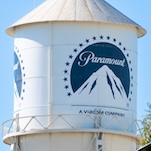
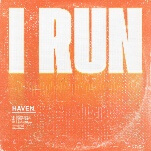
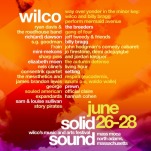
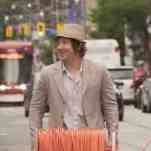
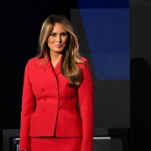
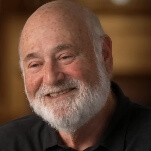
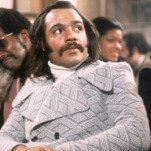
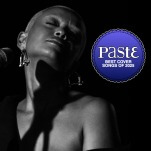
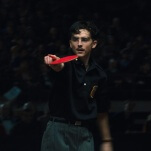
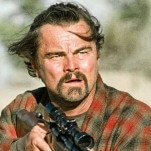
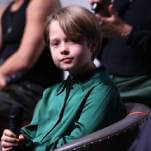

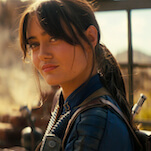

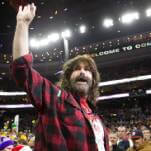
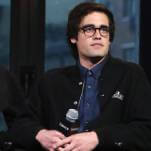
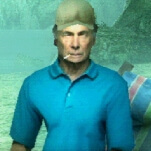
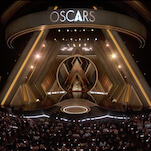

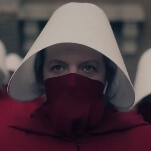
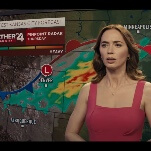


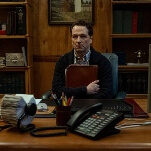
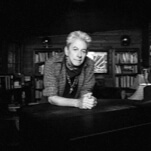
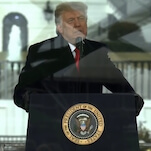

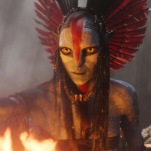
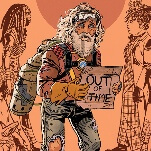
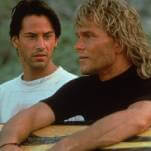
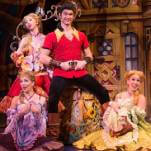
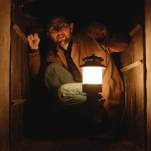


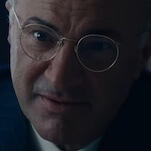
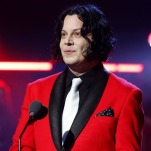

![Rob Reiner's son booked for murder amid homicide investigation [Updated]](https://img.pastemagazine.com/wp-content/avuploads/2025/12/15131025/MixCollage-15-Dec-2025-01-10-PM-9121.jpg)

